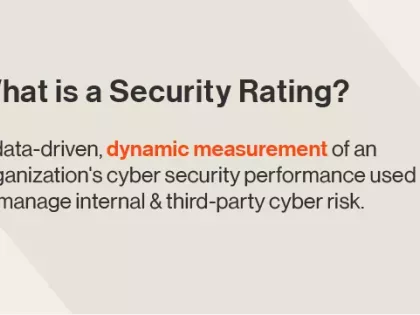Quantifying Cybersecurity Risk: A Beginners Guide

In a 2017 survey of almost 1,300 CEOs conducted by PwC, 63% of respondents said they were “extremely concerned” about cyber threats — up from just 8% in 2013.
For those who have been paying attention, this dramatic upward trend is hardly surprising. Data breaches are getting bigger, more damaging, and more expensive. It’s challenging to read the news without seeing a story about one massive cyber attack or another.
In many industries, the fear of cyber attacks has resulted in huge investments in cybersecurity personnel, services, and technology. Unfortunately, because cybersecurity effectiveness is only demonstrated by a lack of negative results (i.e., zero data breaches), understanding the returns on these investments has been extremely difficult.
For this reason, quantifying cybersecurity risk is a top priority for business leaders who want greater security without inflating their budgets.
Why Do I Need to Quantify Cyber Risk?
The problem with unchecked investment in cybersecurity initiatives is that an increase in resources does not necessarily lead to a decrease in risk. For example, an organization might spend millions on their firewall, SIEM, and other network controls, only to fall victim to a supply chain attack.
Cybersecurity is complex. New technologies, new attack vectors, and new business decisions all have direct effects on a business’s cybersecurity program. In order to maximize the efficiency of the program, resources must be allocated in such a way that the most effective tools and strategies are used to protect the most sensitive systems and data.
However, proper resource allocation requires the ability to put a number on cybersecurity effectiveness. It’s not enough to say “we didn’t experience a data breach this quarter, therefore the investments are working.” After all, two businesses who have both gone one quarter without a data breach might have vastly different levels of cybersecurity risk.
Once an organization has a system in place to quantify cyber risk, however, a range of important benefits become available, including goal-setting, benchmarking, data-driven decision making, and improved resource allocation.
How Can I Quantify Cyber Risk?
Businesses have many options for getting a handle on the effectiveness of their cybersecurity program. Internal assessments, third-party audits, and penetration tests are all popular choices. However, these methods all share four common downsides:
- They’re extremely resource-intensive
- They provide only static, point-in-time results
- They’re subjective
- They produce highly technical metrics
These drawbacks all leave your organization in a similar position to where you started. Having an understanding of your cyber risk in July won’t help you make a decision in October. You’d have to do another assessment, but the last one was expensive and took over a month. And even if you got the results quickly, their accuracy is difficult to validate, and parsing them would require technical knowledge that many executives don’t have.
Security Ratings Provide a Solution.
To fill this critical knowledge gap, Bitsight developed Security Ratings, the outside-in, continuous cyber risk monitoring solution.
Security Ratings gauge the overall cybersecurity posture of an organization based on a variety of externally observable risk factors. The ratings are generated using a numeric scale ranging from 250 to 900, with lower ratings correlating to a higher likelihood of breach.
Security Ratings are automatically generated and updated daily, meaning they don’t require a major commitment of time or money. In addition, because they’re based on external data, Bitsight customers can access the ratings of their peers, competitors, and vendors, enabling them to participate in benchmarking and vendor risk monitoring activities.
Because Bitsight Security Ratings are represented by a single number, it becomes simple for an organization to set goals, measure impact, and compare their results against those of competitors and peers.
Conclusion
With a continuous monitoring solution like Bitsight Security Ratings, it’s possible to hold your cybersecurity program accountable to a quantitative standard. Instead of being an unknown variable, cyber risk becomes as clear as a credit score.
With Security Ratings as a foundation, business leaders have the opportunity to improve their resource allocation, optimize their cybersecurity, and, as a result, decrease their overall cyber risk.


